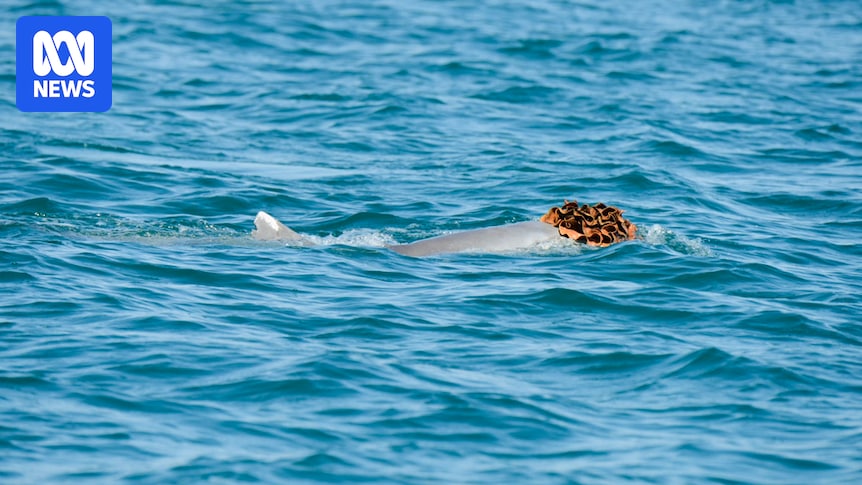Male humpback dolphins have been spotted parading sea sponges on their heads to impress females off Western Australia’s northern coast.
Department of Biodiversity Conservation and Attractions (DBCA) senior research scientist Holly Raudino and her team recently observed the unusual behaviour, which she said occurred in a sexual context.
“They are (the sponges) different shapes and sizes, different colours, but it all seems to be in this one particular area,” Dr Raudino said.
Holly Raudino says more research is needed on the species’ use of sponges. (Supplied: DBCA)
The technique has only been observed in a handful of areas in the Pilbara and the Kimberley, including the Exmouth Gulf and Dampier.
Dr Raudino said while the species were found elsewhere, the behaviour had not been reported anywhere else, or in any other species of dolphin.
Humpback dolphins are listed as vulnerable under the National Environmental Protection Act, with less than 10,000 mature adults estimated worldwide.
“It’s a really small and important population,” she said.
Female bottle-nosed dolphins can be seen sponging for fish in Monkey Mia. (Supplied: Aristocat 2 Cruises)
Sponges as a fishing tool
Further south, another type of dolphin has also been seen carrying sea sponges, but experts say it was for a different reason.
Liam Ridgley, an operator of sea life cruises at Monkey Mia in Shark Bay, said the local Indo-Pacific bottlenose pod used sponges to flush fish out from the coral.
“They’re carrying a sea sponge on their rostrum or snout, and they’re digging around in the seabed using it as a bit of a glove to stop their face getting cut up on the rocks and coral and stuff on the seabed,” Mr Ridgley said.
Liam Ridgley says females pass the sponging behaviour on to their calves. (ABC News: Alistair Bates)
He said dolphins in the area were spotted “sponging” in the 1980s, providing some of the first-ever evidence of marine mammals using tools.
Bytfluke, a 52-year-old female dolphin, has been sponging in Shark Bay for at least 40 years.
Bottlenose dolphins are the only other species that are known to use sponges. (Supplied: Aristocat 2 Cruises)
Mr Ridgley said the technique was practised by about 40 dolphins out of the 3,000 in Shark Bay, predominantly by females who passed it on to their calves.
“With this species, I definitely think the females are more intelligent,” he said.
“It’s very special to see, very spectacular.”

